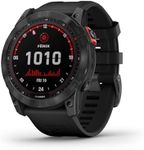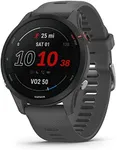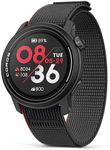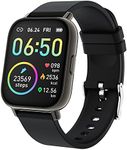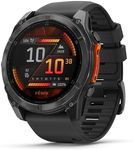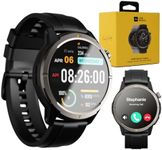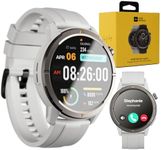Buying Guide for the Best Gps Hiking Watch
Choosing the right GPS hiking watch can significantly enhance your outdoor adventures by providing essential navigation, tracking, and safety features. When selecting a GPS hiking watch, it's important to consider various specifications that will best suit your needs and preferences. Here are some key specs to look out for and how to approach them.GPS AccuracyGPS accuracy refers to how precisely the watch can determine your location. This is crucial for navigation and tracking your hikes. Watches with higher accuracy will provide more reliable data, which is especially important in remote or challenging terrains. Look for watches that support multiple satellite systems (like GPS, GLONASS, Galileo) for better accuracy. If you often hike in dense forests or mountainous areas, prioritize higher accuracy.
Battery LifeBattery life indicates how long the watch can operate before needing a recharge. This is vital for long hikes or multi-day trips where charging options may be limited. Battery life can vary from a few hours to several days. Watches with longer battery life are preferable for extended hikes. Consider your typical hike duration and choose a watch that can last throughout your adventures without frequent recharging.
DurabilityDurability refers to the watch's ability to withstand harsh conditions, including water, dust, and impact. A durable watch is essential for hiking in rugged environments. Look for watches with high water resistance, robust materials, and certifications like MIL-STD-810G for military-grade durability. If you often hike in extreme weather or rough terrains, prioritize durability to ensure your watch can handle the conditions.
Mapping and NavigationMapping and navigation features include preloaded maps, route planning, and turn-by-turn directions. These features help you stay on track and explore new trails confidently. Some watches offer detailed topographic maps and the ability to download additional maps. If you frequently hike in unfamiliar areas or enjoy exploring new trails, choose a watch with comprehensive mapping and navigation capabilities.
Heart Rate MonitorA heart rate monitor tracks your heart rate during hikes, providing insights into your fitness and exertion levels. This can be important for managing your pace and ensuring you stay within safe limits. Watches with advanced heart rate monitoring can offer more accurate data. If you are health-conscious or training for endurance, prioritize watches with reliable heart rate monitoring.
Altimeter, Barometer, and Compass (ABC Sensors)ABC sensors provide altitude, weather, and directional information. An altimeter measures elevation, a barometer tracks atmospheric pressure for weather predictions, and a compass helps with navigation. These sensors are crucial for understanding your environment and planning your hike. If you hike in mountainous regions or need precise environmental data, choose a watch with robust ABC sensors.
ConnectivityConnectivity features include Bluetooth, Wi-Fi, and smartphone compatibility. These allow you to sync your watch with other devices, receive notifications, and access additional apps. Connectivity can enhance your hiking experience by providing real-time updates and data sharing. If you prefer staying connected or using advanced features, look for watches with strong connectivity options.
User Interface and Ease of UseThe user interface and ease of use refer to how intuitive and accessible the watch's controls and menus are. A user-friendly watch can make navigation and accessing features simpler, especially in challenging conditions. Consider watches with clear displays, easy-to-navigate menus, and responsive controls. If you value simplicity and efficiency, prioritize watches with a straightforward user interface.




